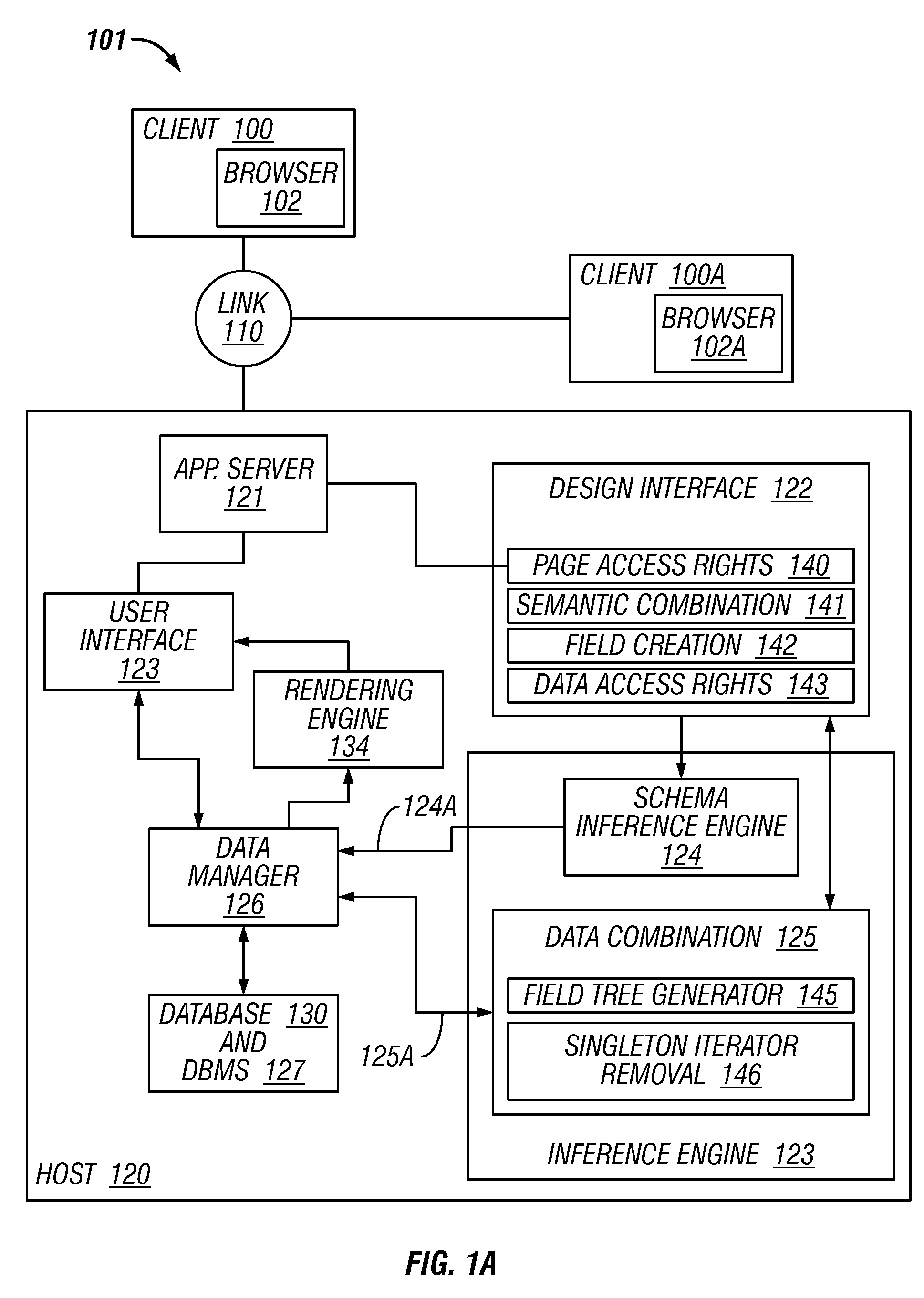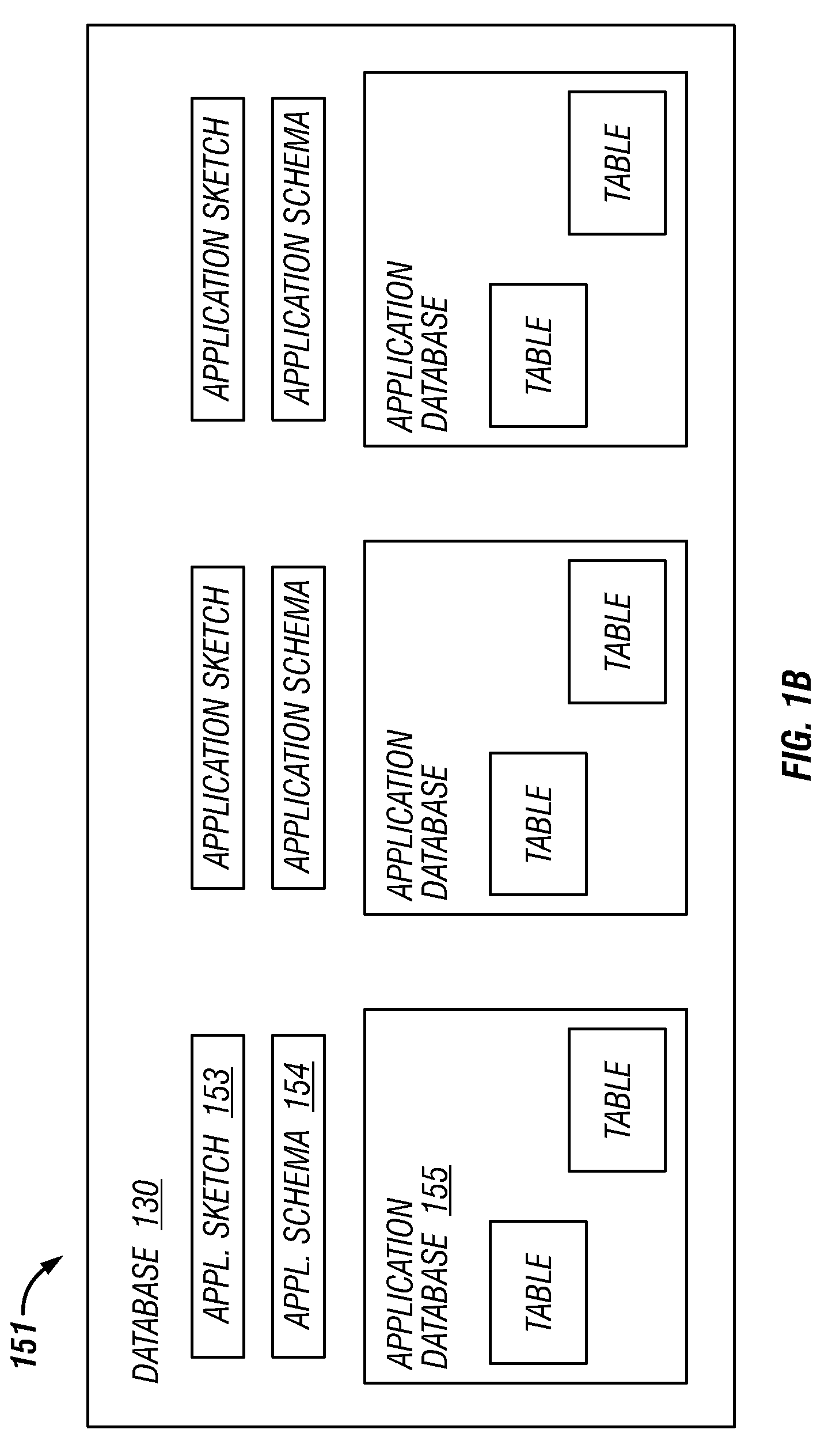Web-page-based system for designing database driven web applications
a database and web application technology, applied in the field of database, can solve the problems of database structure and web application only satisfying fixed, many data is useless without, and certain limitations
- Summary
- Abstract
- Description
- Claims
- Application Information
AI Technical Summary
Benefits of technology
Problems solved by technology
Method used
Image
Examples
example
Illustration of Hyperlink Operation
[0402]An example is shown by the page “Applicant Summary” of FIG. 34. The top-level iterator of this page has originated from the “Submit Resume” data collection iterator. Therefore, its full context contains only the “Submit Resume” iterator. The designer has introduced the hyperlink with text “Rate Resume” in the “Applicant Summary” iterator. Therefore the static context of the hyperlink also contains only the “Submit Resume” iterator.
[0403]Assuming the “Joe” record collected by “Submit Resumes” is record RJ and the “Kate” record collected by “Submit Resumes” is record RK the dynamic full context of the first hyperlink instance is RJ and the dynamic full context of the second hyperlink instance is RK.
[0404]Next the designer sets the target page of the hyperlink to be the “Review, Comment and Rate Resumes” using guidance of the data combination engine regarding identifying appropriate targets (see FIG. 35). This page has an iterator (namely the to...
PUM
 Login to View More
Login to View More Abstract
Description
Claims
Application Information
 Login to View More
Login to View More - R&D
- Intellectual Property
- Life Sciences
- Materials
- Tech Scout
- Unparalleled Data Quality
- Higher Quality Content
- 60% Fewer Hallucinations
Browse by: Latest US Patents, China's latest patents, Technical Efficacy Thesaurus, Application Domain, Technology Topic, Popular Technical Reports.
© 2025 PatSnap. All rights reserved.Legal|Privacy policy|Modern Slavery Act Transparency Statement|Sitemap|About US| Contact US: help@patsnap.com



